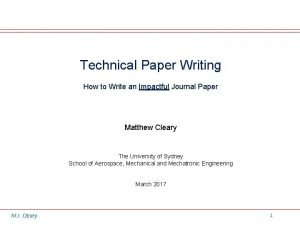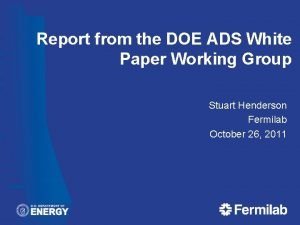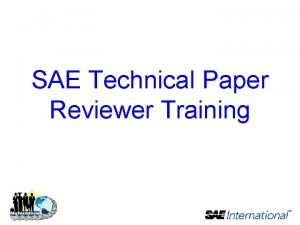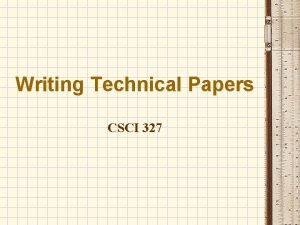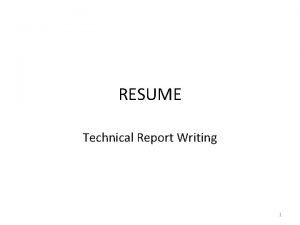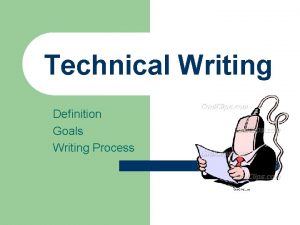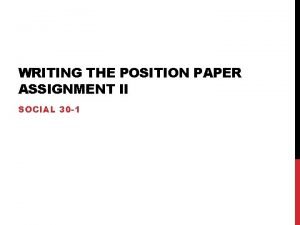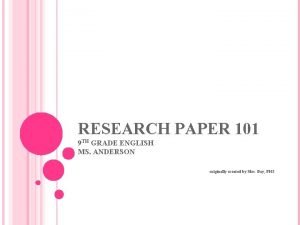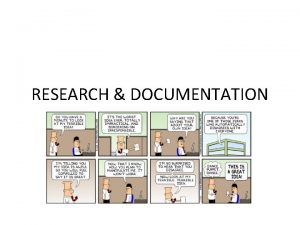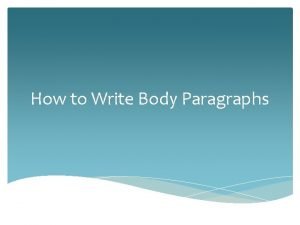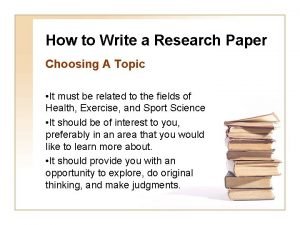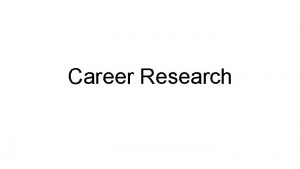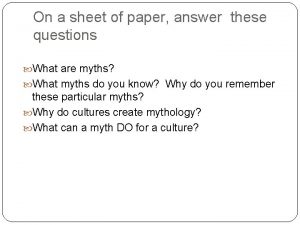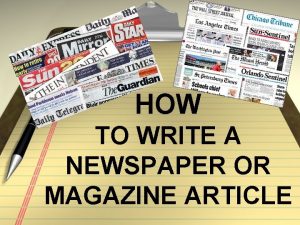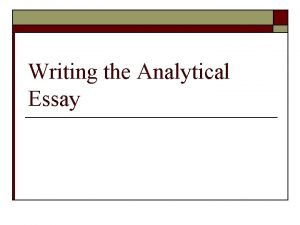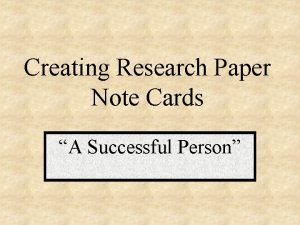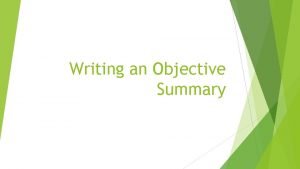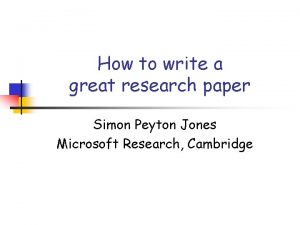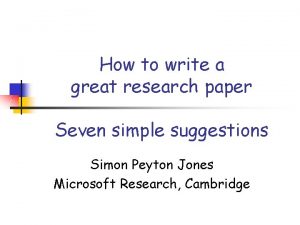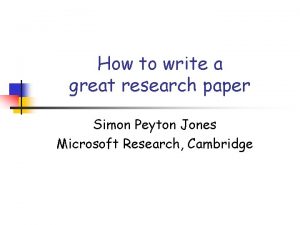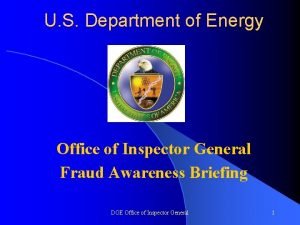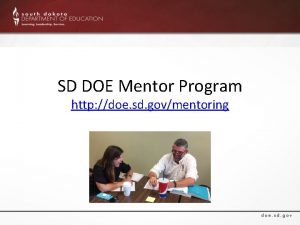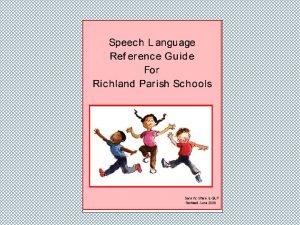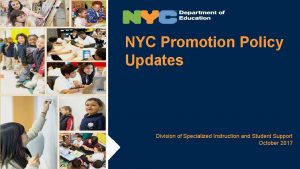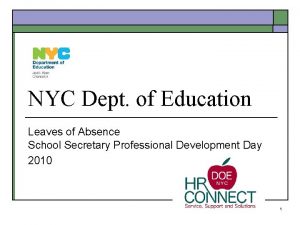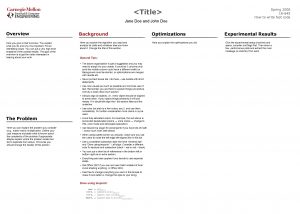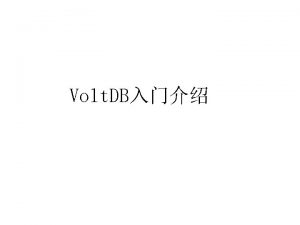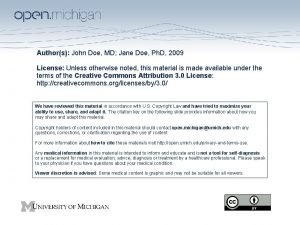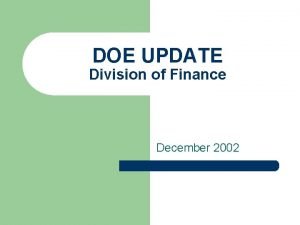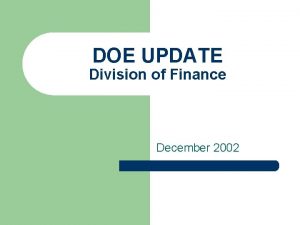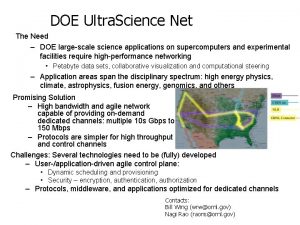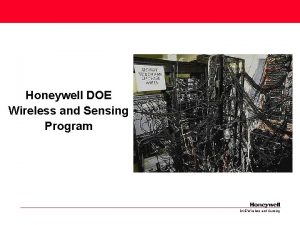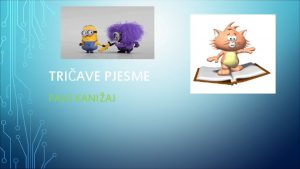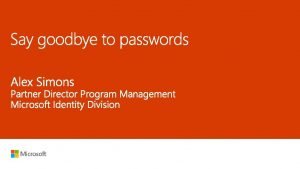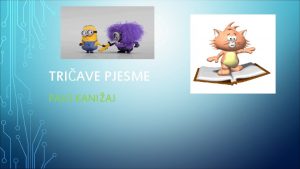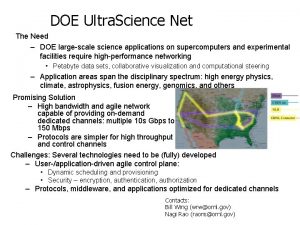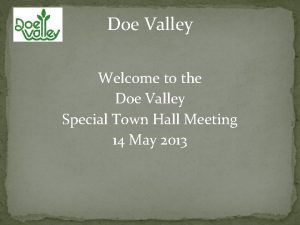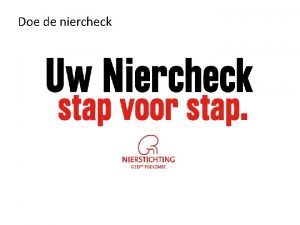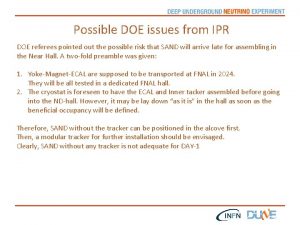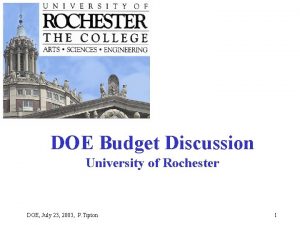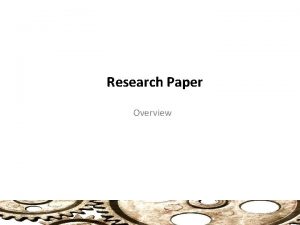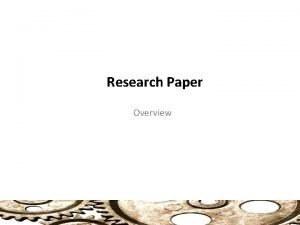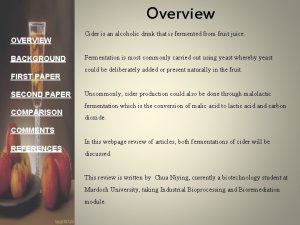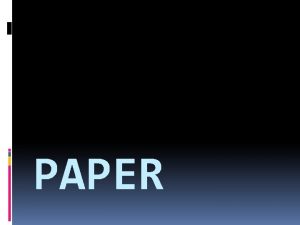How to Write a Technical Paper Overview DOE



























- Slides: 27

How to Write a Technical Paper • Overview • DOE guidelines • Workshop Groups

Technical Communication • Accurate • Clear • Concise • Coherent • Appropriate Adapted from The Mayfield Handbook of Technical and Scientific Writing

Clear • Structural clarity (forecasting or organizational strategies, graphic representation) • Stylistic clarity (simple, direct language) • Contextual clarity (importance, authorization and implications)

Accurate • Document accuracy (clear problem statement, outline, appropriate detail) • Stylistic accuracy (paragraph and sentence structure, word choice) • Technical accuracy (understanding, representation, conceptual mastery, ability to analyze data)

Concise • Focus (narrow to manageable problem and response) • Eliminate unnecessary text (identify words not needed to support claims, use graphics) • Revise (numerous read-throughs, peer review)

Coherent • Consistent patterns (logical and stylistic consistency) • Indicate connections (“road map” through document) • Paragraph development (clear topic sentence, supporting text, transitional devices)

Transitional Devices Example: Reducing drag in an aerospace vehicle is an important design consideration with financial and operational consequences. Poorly designed rocket fuselages can triple fuel and launch costs. Drag increases stress on key joints. This proposed project will develop a model to reduce aerodynamic drag on the RX 100.

Transitional Devices Improved: Reducing drag in an aerospace vehicle is an important design consideration. For example, poorly designed rocket fuselages can triple fuel and launch costs. Moreover, drag increases stress on key joints. Therefore, this proposed project will develop a model to reduce aerodynamic drag on the RX 100.

Appropriate • Match goals and purpose • Address the correct audience (expertise, purpose, attitude) • Match context (institutional guidelines, general scientific and technical community)

Critique The flow of electrical current can induce the migration of impurities or other defects through the bulk of a solid. This process is called electromigration. In simple electromigration, the force on the defect is thought to have two components. The first component is the force created by direct interaction between the effective charge of the defect and the electric field that drives the current. The second component, called the "wind force, " is the force caused by the scattering of electrons at the defect. • --J. A. Stroscio and D. M. Eigler, "Atomic and Molecular Manipulation with the Scanning Tunneling Microscope, " Science

Purpose and Benefits • To clarify your thinking • Publish in DOE Journal of Undergraduate Research • Grad School application/resume • AAAS Conference 2010 – San Diego

Resources • DOE Program Handbook • Online Mayfield Handbook • Writing groups with peers • One-on-one meetings with Clyde • Ask your mentor

General Guidelines • DOE Program Handbook • DOE will not consider publishing a paper that does not conform to its guidelines

Outline of Research Paper • Title Page • Table of contents • Abstract (2500 Character Max, including spaces) • Introduction, Methods, Results, Discussion & Conclusions = 10 page maximum • References (IEEE format for citations) • Acknowledgements • Figures and tables

Abstract • The abstract is a brief summary of your research. No more than 2500 characters! • Includes the following: • • • Header: Title, Names, Affiliations Introduction: Background & Significance Methods and Materials: How did you do it? Results: What happened? Discussion and Conclusions: Interpretation • Only standard abbreviations (laser, DNA, etc. ) • No citations See p 15 of DOE guide for details and very good sample abstracts.

Sample Title Page See Page 40 of the Program Guidebook for sample layout. • Title of Research • Name of Student • Program Name • Name of Student’s School • Host Lab (Lawrence Berkeley National Laboratory) • Location: Berkeley, California • Date • Signatures (yours and your Research Advisor’s)

Table of Contents • List all sections of the paper with page numbers. • Tables and Figures are included at the end of your research paper (after your References. )

Introduction: Objectives • Provide a rationale for the study • State the nature and scope of the problem • Include background/ history and references important to understanding the study There is no one right approach! Use one or some of these.

General Notes on “Introduction” Hook the reader – Make it interesting! Start with the familiar or the general Poor: “Galaxies are collections of stars and they have emission at 100 microns and 1. 4 GHz and telescopes can detect them. ” Better: “The correlation between the far-infrared and radio continuum emission in galaxies is one of the most robust and one of the most puzzling relations in extragalactic research. ”

Materials and Methods • Complete sentences • Describe the experimental procedure, and the materials used • Do NOT describe well-known techniques: examples: PCR, NMR • Do spell out complete names when first introduced • Reference established procedures when necessary

Results • Tables and Figures • Your data are your data • No interpretation

Results • Describe: We detected 115 GHz continuum emission in 3 out of 44 galaxies. • Do not interpret: Because we detected so few galaxies, there must be very little thermal emission from these sources.

Discussion & Conclusions Interpretation of Results • Comparisons to similar studies • Future research •

Figures and Tables What is a “Figure” ? • Number tables and figures separately. • Include figure captions. • Place all tables and figures at the end of your paper. • Figure 5. A really great figure!

Acknowledgments Identify where the research was done. • Acknowledge those who provided major assistance to you. • Thank the DOE, Office of Science, LBNL, and CSEE for creating, funding, and organizing the program. • If applicable, thank the NSF for help in funding your internship. •

References Cite all ideas or information from other sources • In the body of the text [1] • With complete citation in the references section • [1] T. T. Helfer, “My Great Paper, ” Journal of Prestigious Research, v. 315, pp. 155 -167, 2001. • Citations should be in IEEE format • Don’t copy citations! Read the original paper for yourself! •

Recap of Research Paper • Introduction • Use short paper as springboard • Materials & Methods • Straightforward to write • Results • • Again straightforward Discussion & Conclusions • Your mentor can help out with interpretation All those miscellaneous details: abstract, title page, TOC, figures • • Tedious but straightforward
 How to write a technical paper
How to write a technical paper Doeads
Doeads My sae techzone
My sae techzone Technical paper outline
Technical paper outline English general paper paper 2 comprehension
English general paper paper 2 comprehension Aice general paper essay format
Aice general paper essay format Report writing resume
Report writing resume Technical writing definitions
Technical writing definitions Position paper social 30-1
Position paper social 30-1 How to write an a+ research paper keystone
How to write an a+ research paper keystone What is research documentation
What is research documentation What is a teal paragraph
What is a teal paragraph Example of discussion in research paper
Example of discussion in research paper How to write a career research paper
How to write a career research paper On a sheet of paper answer the following questions
On a sheet of paper answer the following questions How to write a newspaper
How to write a newspaper Nala is writing an analytical essay
Nala is writing an analytical essay Example note cards for a research paper
Example note cards for a research paper Example of objective summary
Example of objective summary Simon peyton jones how to write a great research paper
Simon peyton jones how to write a great research paper Simon peyton jones how to write a great research paper
Simon peyton jones how to write a great research paper How to write a great research paper simon peyton jones
How to write a great research paper simon peyton jones Department of energy inspector general
Department of energy inspector general Elof standards nyc
Elof standards nyc Sd doe mentor program
Sd doe mentor program Serp.doe.louisiana
Serp.doe.louisiana Insesis
Insesis Leave of absence nyc doe
Leave of absence nyc doe
